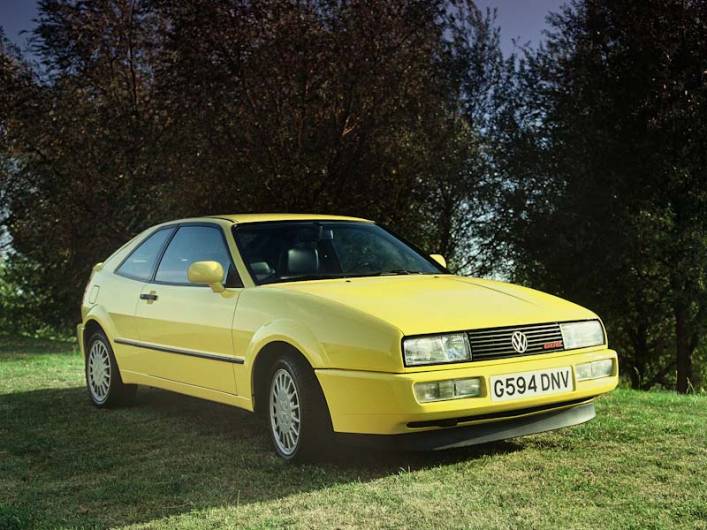
RAC sale – up to 33% off*
• Roadside cover from £5.29 a month†
• We get to most breakdowns in 60 mins or less
• Our patrols fix 4/5 breakdowns on the spot

BY JONATHAN CROUCH
Introduction
Once upon a time, Volkswagens were, as the name suggests, in German, 'people's cars' - sensible and solid transport. Even in the mid-Eighties, despite the success of the Golf GTi, people still thought of Volkswagens as dependable rather than desirable.
All that changed in 1989 when the company unveiled the Corrado. It was undoubtedly the most elegant Volkswagen to date and would go on to be the company's fastest ever car. It died at the hands of Volkswagen's cost-cutting accountants, after an all-too-brief six years in production. It seems there's no longer any room for low-profit image leaders...
Models
Models Covered:
3-door Coupe, 1.8, 2.0 8v & 16v, 2.8 V6 [1.8 16v, 2.0 8V, 2.0 16v, G60, VR6
History
Right hand drive Corrados arrived in the UK in May 1989. The first cars had the Golf GTi's 1.8 litre 16-valve engine. It took a further two years before the Corrado began to realise its potential, with the April 1991 release of the supercharged G60 model in right-hand-drive form (it was previously a special-order left hooker).
All these early models had alloy wheels and featured standard central locking and power steering. The rear spoiler was electrically powered and programmed to rise automatically at 40mph. It probably did more for conversation in following cars than it did for Corrado aerodynamics at such relatively low speeds.
In March 1992, the 1.8 litre engine was enlarged to 2.0 litres, and a catalytic converter became standard, as did anti-lock brakes. Power remained the same 136bhp but torque increased to improve driveability.
The Corrado's best engine arrived in September 1992 with the six-cylinder VR6. It was a bigger, 2.9-litre version of the Golf VR6's 2.8 and turned the Corrado into the first 150mph Volkswagen. Automatic transmission was also introduced in combination with the VR6 engine. Production of the G60 ceased at the same time and the car was, sadly, phased out in 1996.
What You Get
Equipment levels are high, though later cars were better specified, which adds both desirability and resale value.
Whatever you spend, you'll be buying a great-looking sports car that can seat four adults - something lacking in many other coupes.
The other advantage to Corrado ownership is the Volkswagen dealer network. Parts are plentiful, though not always cheap. In VR6 guise, this is a 150mph car, though not a temperamental one. Look after it, and it should return the favour.
What You Pay
Please fill in the form here for an exact up-to-date information.
What to Look For
The danger with buying any used performance car is in how well it's been looked after. You really do need to check the service history, especially with the G60 and VR6s, and look closely for signs of suspension, tyre, clutch and gearbox damage.
Four-cylinder cars need their cam-belt changed at around 70,000 miles - the VR6's camshafts are driven by more durable chains and sprockets. Additionally, a belt drives the G60's supercharger. This should be checked for wear (as should the supercharger itself as repairs are pricey).
Being Volkswagens, the cars are built very solidly, though some early cars suffered a little from patchy interior trim quality. Most problems should have been remedied by now but check that everything fits without squeaks and rattles.
Replacement Parts
(Approx) For a new clutch, expect to pay around £70. A set of front brake pads will set you back £30 to £35 and a headlight lens should be about £20.
Some parts prices will scare you, though. Try £790 for a full exhaust system - the catalytic converter alone is over £425.
On the Road
The Corrado was always an outstanding handler. Indeed, early 1.8-litre cars were criticised only for being underpowered; such was the excellence of the basic chassis.
Show any Corrado a winding road and it can't fail to impress. The ride can be a little on the firm side, but this is a sports car, after all, and precise handling is what Volkswagen intended it have.
Overall
This coupe is sadly missed by car enthusiasts everywhere. With Volkswagen still not showing any signs of developing a successor, this car has classic written all over it.







